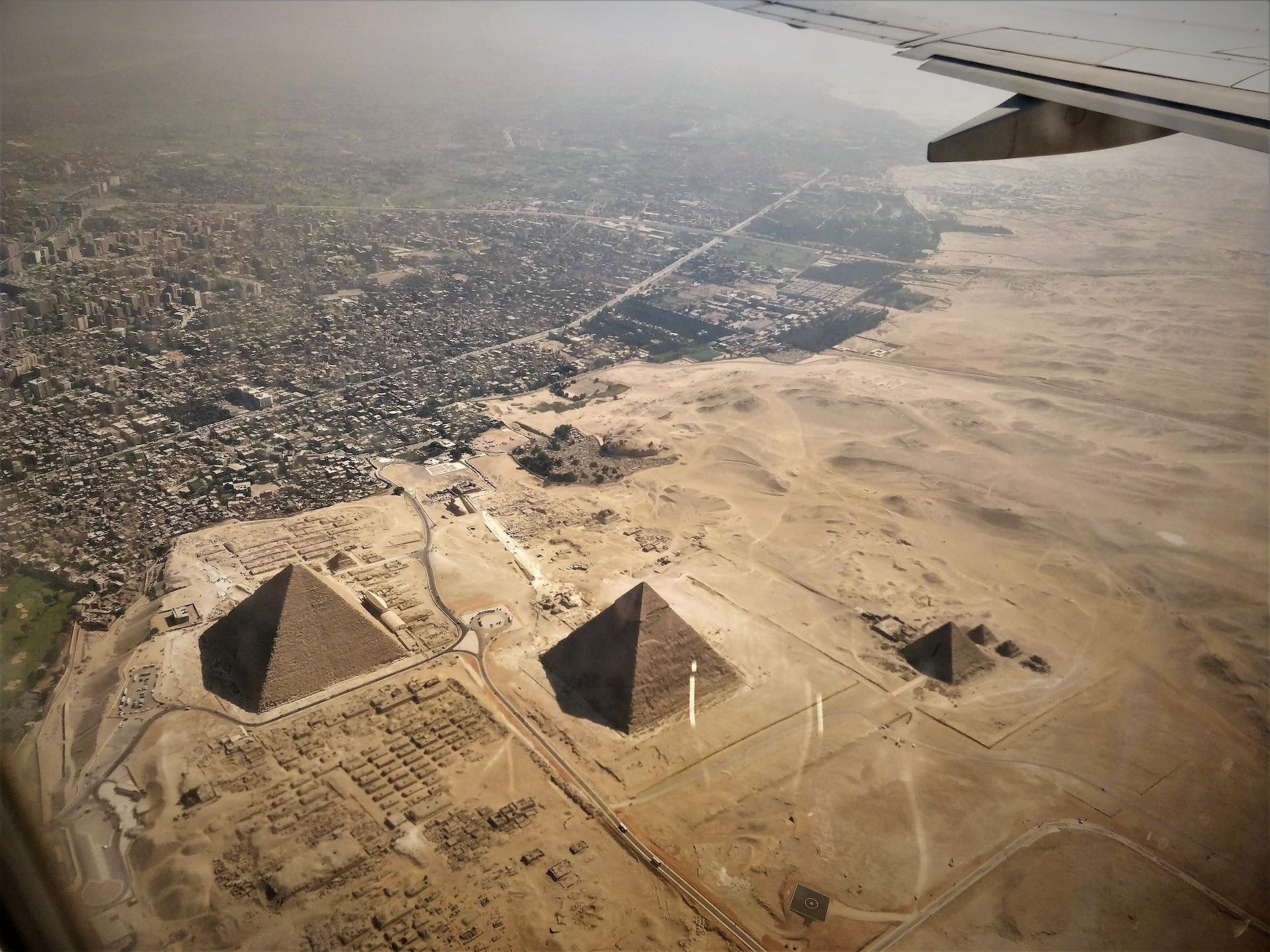Read update
- The Theories Behind The Great Pyramids Continue To Circulate
It is difficult to explain how the pyramids were built - so the next most likely answer is that aliens built them (problem solved and doesn't pose any other more difficult questions!). But joking aside, the construction of the pyramids has been very controversial and has spawned many odd and quaky theories.
In addition to people thinking that super-advanced aliens came to Earth to lug big stones into a pile for some reason, there are plenty of other crackpot theories. One of the other fringe theories is that they were massive grain silos built by Joseph of Genesis - the lack of internal storage space notwithstanding (as anyone who has been inside the Great Pyramid would tell you).
These magnificent structures have always been curious to humans since the beginning of recorded history. However, what are the theories of the Great Pyramids and their origins? Are any true?
UPDATE: 2023/05/30 13:56 EST BY NOAH STAATS
The Theories Behind The Great Pyramids Continue To Circulate
As time goes on, it's only understandable that more curious people want to uncover how and what made the Great Pyramids in Egypt. From theories that make perfect sense to aliens, there have been endless conspiracies about these pyramids' origination since the dawn of their existence. What theory makes the most sense to you?
Evolution of Pyramids And Labor
Like all human civilizations and architectural know-how, the pyramids evolved over time along with their construction techniques. The Bent Pyramid is an example of an earlier pyramid that was constructed poorly and that later pyramids learned from.
- Evolved: The Construction Evolved over time
Living many years later, the Greeks thought they were built with slave labor. But now archeologists are more of the opinion that they (or at least the Great Pyramid of Giza) were built by tens of thousands of skilled workers who worked for a salary as a form of tax payment. It may have been that weeks or months of labor on the pyramids was a form of tax - the Inca used a similar system.
- Slaves: Were Probably Not Used In Their Construction (At Least For Some of Them)
- Foreigners: May Have Been Used For Building The Pyramid of Amenemhat II
For the Middle Kingdom Pyramid of Amenemhat II, there is even evidence that foreigners from Canaan may have been used for its construction.
This recent discovery at one of the Great Pyramids in Egypt may be worth exploring.
The Bigger Picture And Internal Construction
It is also important to remember that the pyramids were not built by themselves. The pyramids are just the largest and most enduring parts of large funerary complexes.
Before the actual pyramid could be built, the foundation and the inner parts of the pyramid had to be built first. Sometimes rocky outcrop was used as the core of the pyramid to save the work. It is also believed that the inner chambers and passages were constructed independently, and then the actual pyramid was built around them.
Most of the construction hypotheses are based on the belief that huge stones were carved from quarries with copper chisels, and these blocks were then dragged and lifted into position. Experts don't disagree so much on whether aliens are grey or green but rather on the exact methods used to move and put these massive stones into place.
Causeway / Ramp Theories
Some theories suggest that causeways were used to haul the stone blocks on wooden sleds up the side of the pyramids. According to this idea, the ramps would have been lubricated, and as few as 10 men would have been needed to drag the stones up the ramps. Once the stone block had reached its intended height, wooden rockers may have been used to maneuver it into position.
- Ramps: Likely Zig-zagged Around The Pyramid Using The Superstructure
This is the main modern idea, and it is thought that the ramp would not have been a long straight one as it would have had to have been as large as the pyramid. Instead, it may have been some form of zigzagging, a spiraling ramp that was supported by the superstructure of the pyramid, or a ramp using incomplete parts of the pyramid's superstructure.
These ramps would then have been dismantled after the pyramid was built.
The Wooden Crane Theories
Another theory is that as the pyramids were built with levels, the blocks would have been lifted from one level to the next. A wooden crane with a counterweight would have been used to hoist them up.
- Wood: The Egyptians May Not Have Had Strong Enough Wood
A problem with this idea is that it is thought that the Egyptians didn't have available trees strong enough to lift blocks this heavy. These blocks were heavy, with their average weight being around 2.5 tons. It is hard to see how that weight wouldn't have broken the crane.
The Pulley Idea
It has also been suggested that pulleys could have been used to hoist the blocks up the ramps and fulcrums to manipulate the blocks into place. While it is not known if the Egyptians used this system for the pyramids, they did seem to use it for ships at the time.
- Pulleys: May Not Have Been Invented Until Roman Times
Memphis Tours Contend that pulleys were not invented until Roman times (although the Greek historian Herodotus speaks of levers being used to raise the blocks from one level to the next).
Why Can't We Recreate The Great Pyramids?
A question as old as the Great Pyramids is why people can't recreate them in modern times. One of the mysteries behind the construction of these iconic landmarks is the material used to create them. Up to this point, we know the Great Pyramids were constructed using processed gypsum, but in our modern technology: recreating or repeating the exact formula is not doable.
Many pyramids throughout the world have been inspired by the Egyptian ones, including the Pyramid of Cestius.
Although pyramids resembling the Great Pyramids in Egypt can be built, they will likely never be perfect matches. Modern-day construction materials are not compatible with the original ones used to create these pyramids, so it's virtually impossible to recreate them authentically.
Today, construction workers will use concrete to create bricks for the foundation of a building, leading up to the roof in some cases. However, for the Great Pyramids, the gypsum was specific to that area and the methods the people of Egypt created for building, which experts cannot figure out. In a way, it's almost as if modern building methods changed so dramatically that restoring ancient structures is now impossible. The materials and ways of using them are no longer compatible with sites like the ancient pyramids.
Of course, that doesn't mean that building a similar-looking set of pyramids can't be done. If someone were to try this, they would likely spend hundreds of millions on labor, materials, and purchasing a site large enough to host one: but it can be done. Will these new pyramids be the same as the Great Pyramids in Egypt? No.
They could, however, be a great way to replicate the current ones in a way that future generations can come to understand and appreciate. Regardless, the Great Pyramids are one of a kind: for more reasons than one.
The "Great Pyramid" in Las Vegas is just as large as some in Egypt, so that might be a fun way to commemorate them.



